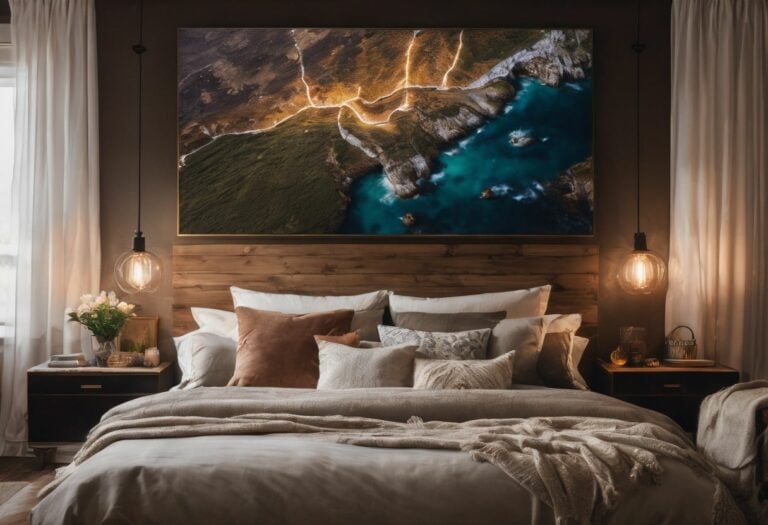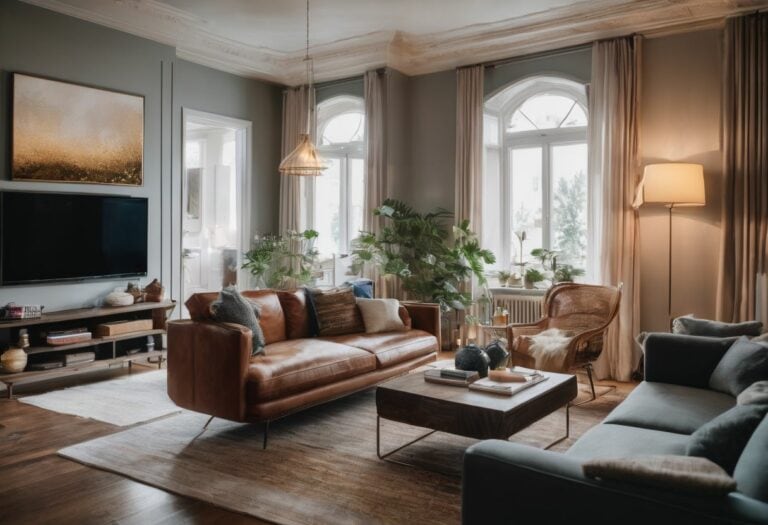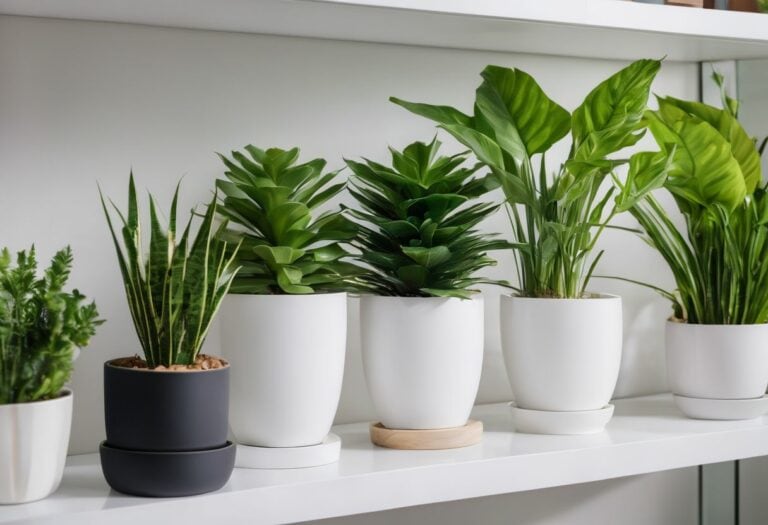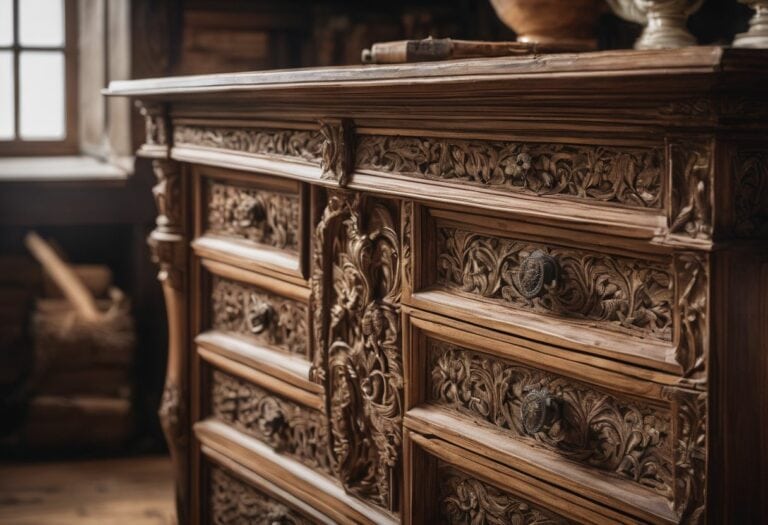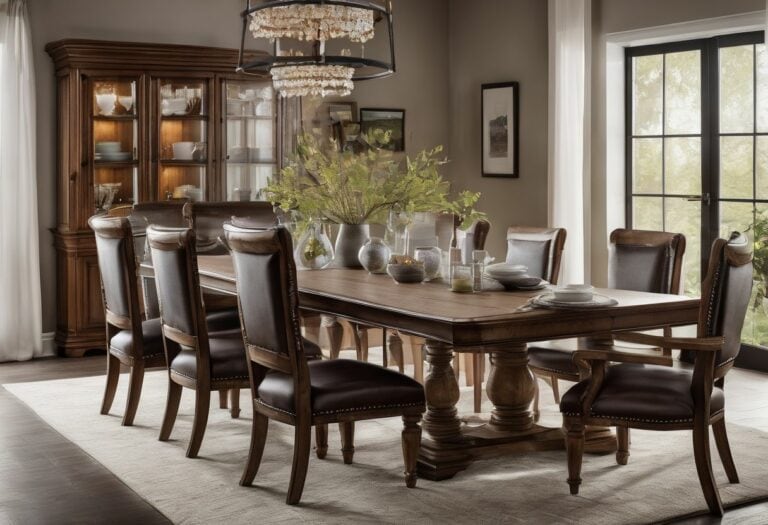What is the Purpose of Minimalism in Design: Explore Its Core Purpose & Impact
In a world buzzing with clutter and complexity, the allure of minimalism in design beckons. You’ve seen those spaces that breathe tranquility or websites that ooze clarity – they all share one secret: less is truly more.
But what exactly drives designers to strip down their creations to the bare essentials? Maybe you’re wondering how this approach could transform your own projects, turning them from chaotic to harmoniously functional.
One intriguing fact about minimalist design is its ability to create an environment of calm and focus. It’s not just about sparse arrangements or monochromatic color schemes; it’s a philosophy where every curve, line, or feature holds purposeful meaning.
This article promises you a clear understanding of minimalism’s purpose in design – from living rooms bathed in serenity to user-friendly webpages free of distractions. Discover how embracing minimalist principles can elevate your project’s functionality and aesthetic appeal.
Let’s explore elegance through simplicity together!
What is the Purpose of Minimalism in Design
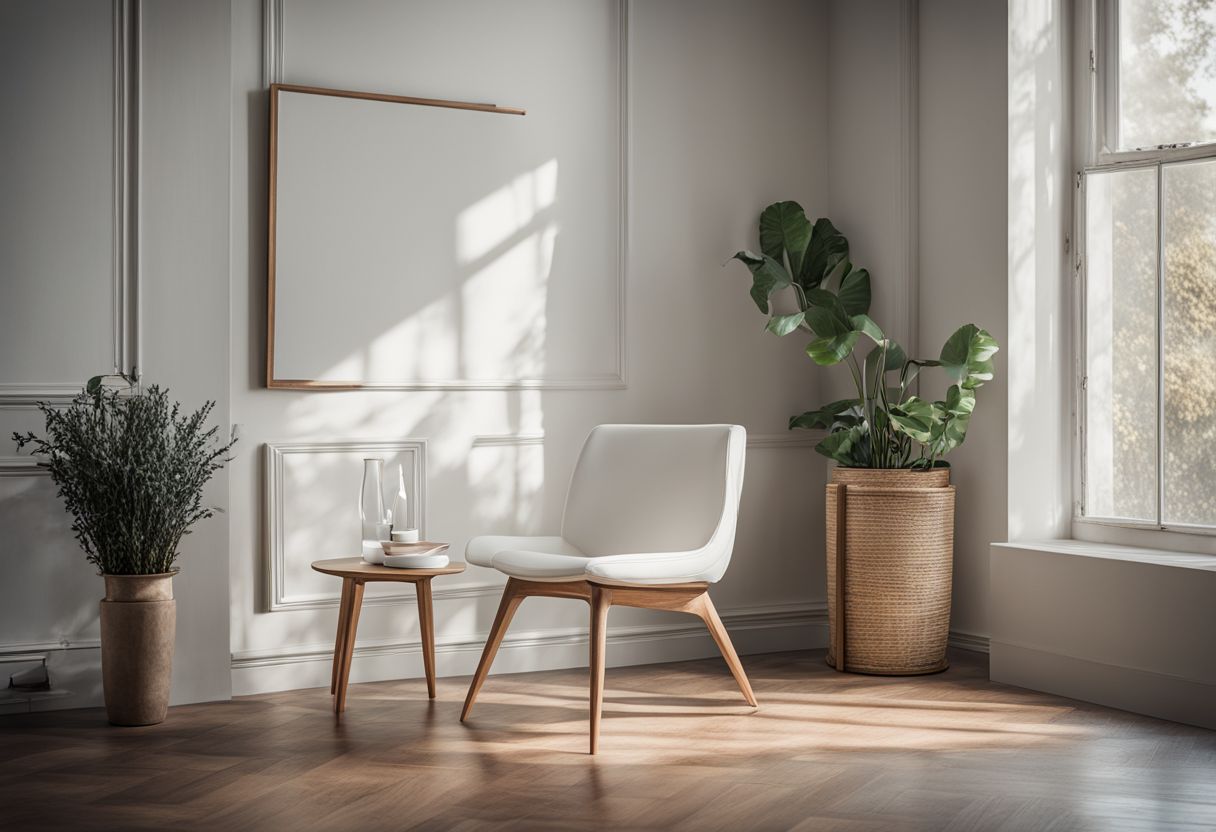
Minimalist design is characterized by clean lines, open spaces, and a focus on essential elements. It prioritizes functionality over ornamentation and embraces simplicity as its core aesthetic.
Defining Minimalist Aesthetics
Minimalist aesthetics focus on simplicity and the idea that “less is more.” This means using only what’s needed. Imagine a room with lots of space, no clutter, and pieces that have clean lines.
In art, this might look like simple shapes with just one or two colors. The goal is to create a calm and clear environment.
This style also loves open floor plans in homes. It highlights light, form, and beautiful materials without extra stuff getting in the way. The look is about being purpose-driven; every part should support what people need to do.
Next up are the core characteristics of minimalism—things like how it uses space and what makes it special.
Core Characteristics of Minimalism
Minimalism in design keeps things simple and clean. It takes away the things we don’t need to make room for what’s important. Here are some of its core features:
- Less is more: This design style uses only what is needed. It removes all the extra stuff that is not essential.
- Clean lines and open spaces: In minimalist design, you’ll see straight lines and lots of empty space. These make the design feel calm and organized.
- Simple color schemes: Colors are usually toned down or limited to just a few. This helps create a peaceful look.
- Use of light and form: Good lighting and simple shapes take center stage in minimalist design. They help highlight the most important parts.
- Beautiful materials: Quality materials that look nice and last long are used instead of lots of decorations.
- Reductive elements: Everything that isn’t necessary gets taken away in this type of architecture and interior design.
- Focus on function: The main goal is to make sure the design works well and serves its purpose without extra bits added on.
- Emphasis on usability: A minimalist approach makes things easy to use by keeping designs clear and straightforward.
- White space is key: Empty areas, called white space, are not filled with stuff. They give our eyes a place to rest.
- Harmony and balance: Every part fits together nicely, making everything feel like it belongs together in a peaceful way.
The Purpose of Minimalism in Design
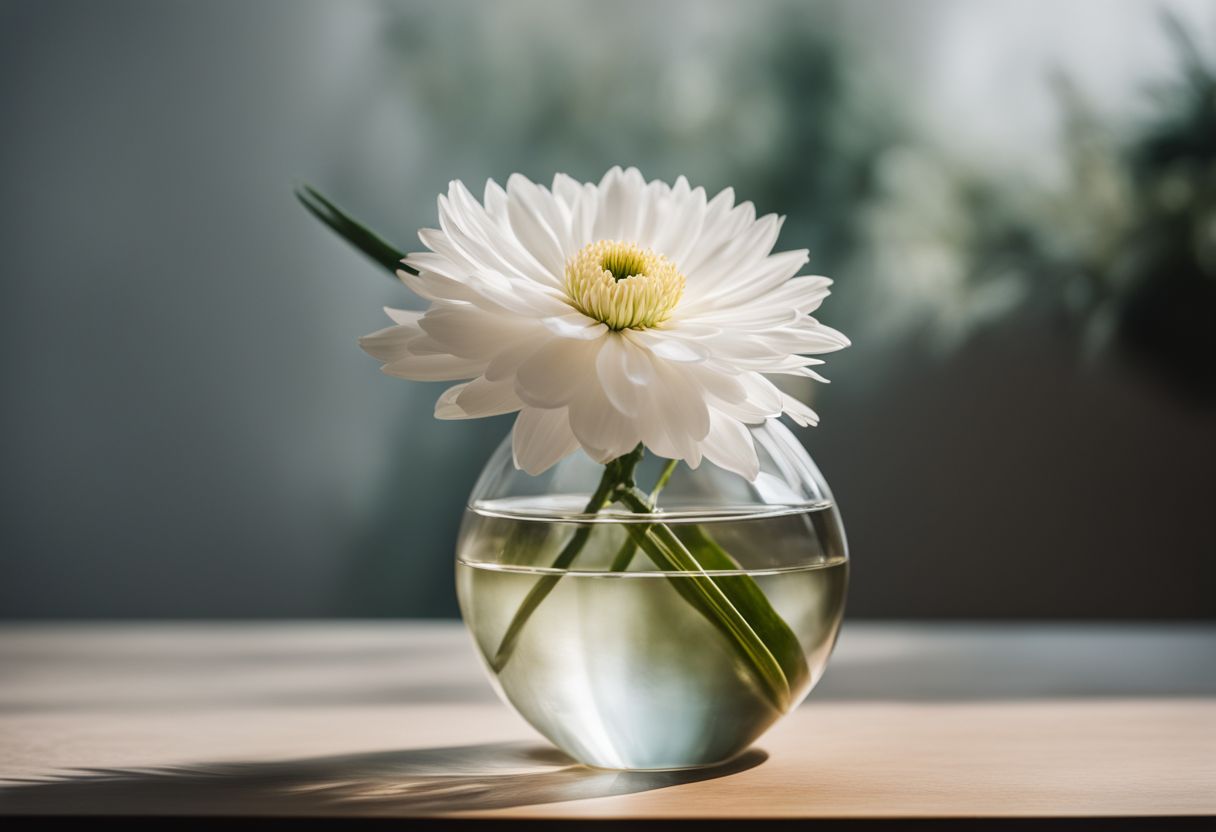
Minimalism in design serves the purpose of promoting clarity and focus, prioritizing functionality over form, and enhancing user experience. These principles guide the creation of simplistic yet impactful designs that effectively communicate information and serve their intended purpose.
Clarity and Focus
Minimalist design strips away the non-essential, leaving only what’s important. This approach gives your content the spotlight it deserves. Think of a clean room with just a comfy chair and a beautiful painting on the wall—it’s easy to see and enjoy every part.
Clear design also helps people find what they need faster. Without extra stuff like wild colors or lots of text, users can focus on what matters most. Whether it’s finding information on a website or enjoying art, minimalism makes it all easier to understand and love.
Functionality Over Form
Minimalism in design is all about prioritizing function over appearance. This means focusing on making things work well rather than just look good. When it comes to minimalist design, the main goal is to ensure that every element serves a purpose and contributes to the overall functionality of the design.
By stripping away unnecessary frills and decorative elements, minimalism allows for clear communication and efficient use.
Embracing functionality over form in design leads to simplicity and clarity in conveying information. It helps users interact with products or spaces more intuitively as they are not distracted by unnecessary visual noise.
Enhancing User Experience
Minimalist design plays a crucial role in enhancing user experience by focusing on simplicity, clarity, and functionality. By removing unnecessary elements and simplifying interfaces, minimalist design allows users to navigate with ease and find the information they need quickly.
This approach minimizes distractions and reduces cognitive load, making it easier for users to engage with the content effortlessly.
Moreover, minimalist design emphasizes content focus and readability, ensuring that users can easily consume information without being overwhelmed by excessive visual elements. The use of clear typography and uncluttered layouts enhances discoverability and makes the interface more intuitive for users.
The Popularity of Minimalist Interior Design
Minimalist interior design has gained immense popularity due to its clean and uncluttered aesthetic. It is favored for its ability to create a sense of spaciousness and simplicity within living spaces.
The deliberate use of essential elements, neutral colors, and open floor plans contributes to the appeal of minimalist design. This approach resonates with many people who seek a serene and organized environment in their homes.
Moreover, the minimalist design’s emphasis on functionality over ornamental details aligns with the contemporary lifestyle that values practicality and efficiency. Many individuals appreciate how minimalist interior design prioritizes only the necessary items, reducing visual noise and promoting a calming atmosphere at home.
As a result, this style has become increasingly popular across various demographics seeking an uncluttered, modern living space.
The rise in popularity of minimalist interior design can also be attributed to its adaptability to different architectural styles and budget considerations. Whether it’s in urban apartments or rural retreats, minimalism offers versatility that appeals to homeowners looking for a timeless yet modern ambiance at home.
Embracing Minimalism: Is it Right for Your Project?
Before deciding to embrace minimalism in your design project, it’s essential to evaluate the benefits and considerations that come with this style. Understanding how minimalism can enhance the functionality and aesthetics of your project will help you make an informed decision.
To delve deeper into this topic, read on for a comprehensive guide to understanding the purpose of minimalism in design.
Evaluating the Benefits and Considerations
When considering minimalism in design, it’s essential to weigh the advantages and drawbacks carefully. Here are some key points to consider:
- Improved User Experience: Minimalist design can enhance user satisfaction by reducing clutter, improving navigation, and focusing on essential elements. This can lead to increased engagement and conversion rates.
- Streamlined Aesthetics: The simplicity of minimalist design can convey elegance and sophistication, creating a lasting impression on users. It also allows for easier adaptation to changing trends without requiring major overhauls.
- Potential Limitations: While minimalism offers benefits, it may not be suitable for all projects or industries. Some users may prefer more visually stimulating designs, and certain products or services may require a more detailed presentation.
- Emotional Impact: Minimalist design can evoke feelings of calmness, clarity, and harmony. These emotional responses can contribute to positive brand associations and customer loyalty.
- Adaptability to Mobile Devices: In an increasingly mobile-centric world, minimalist design often translates well across various screen sizes and resolutions, ensuring consistency in user experience.
- Consideration for Visual Impairments: While minimalist designs can reduce visual clutter, they should still prioritize accessibility for users with visual impairments through appropriate contrast ratios and text alternatives.
- Sustainability and Environmental Impact: Embracing minimalism in product design aligns with sustainable principles by prioritizing functionality over excess material usage, promoting environmental responsibility.
- Maintenance Considerations: While minimalist designs may seem simplistic initially, maintaining a clean aesthetic requires ongoing attention to detail in content management and visual consistency.
Conclusion
In summary, minimalism in design holds immense significance by prioritizing simplicity, functionality, and clarity. It aims to enhance user experience by eliminating unnecessary elements and fostering a sense of calm and focus.
Whether in architecture or graphic design, the purpose of minimalism is to convey the most important message while creating elegant and purposeful designs. Embracing minimalism can lead to intuitive user journeys and spaces that exude an air of luxury and spaciousness.
FAQs
1. What does minimalism mean in design?
In design, minimalism means using simple elements and keeping things uncluttered. It’s about having fewer things like icons, typefaces, and pop-ups to create a clear space that is easy to use.
2. Why do web designers choose minimalist designs?
Web designers choose minimalist designs to help users find what they need without stress. This kind of design makes websites easier to use by getting rid of extra stuff that causes information overload.
3. Can you use minimalism in your home too?
Yes! Interior designers often use minimalism for a clean look in the house. They pick simple furniture like cabinets and benchtops, with less decoration for rooms like the dining room and bedrooms.
4. How does minimalism help people who make websites on WordPress?
Minimalist web design helps WordPress creators by making their sites fast and easy for visitors to navigate through pages without confusion or extra clicks.
5. Did an artist influence minimalist design?
Yes! Kasimir Malevich was an artist known for his simple “Black Square” painting which showed how powerful simple shapes can be; this idea has influenced many designers and the concept of ABC art or minimalist architecture.


